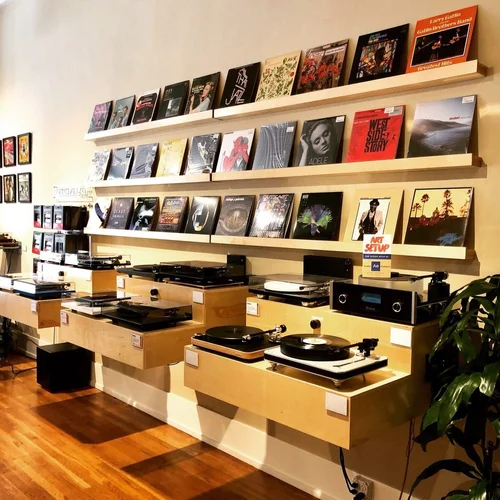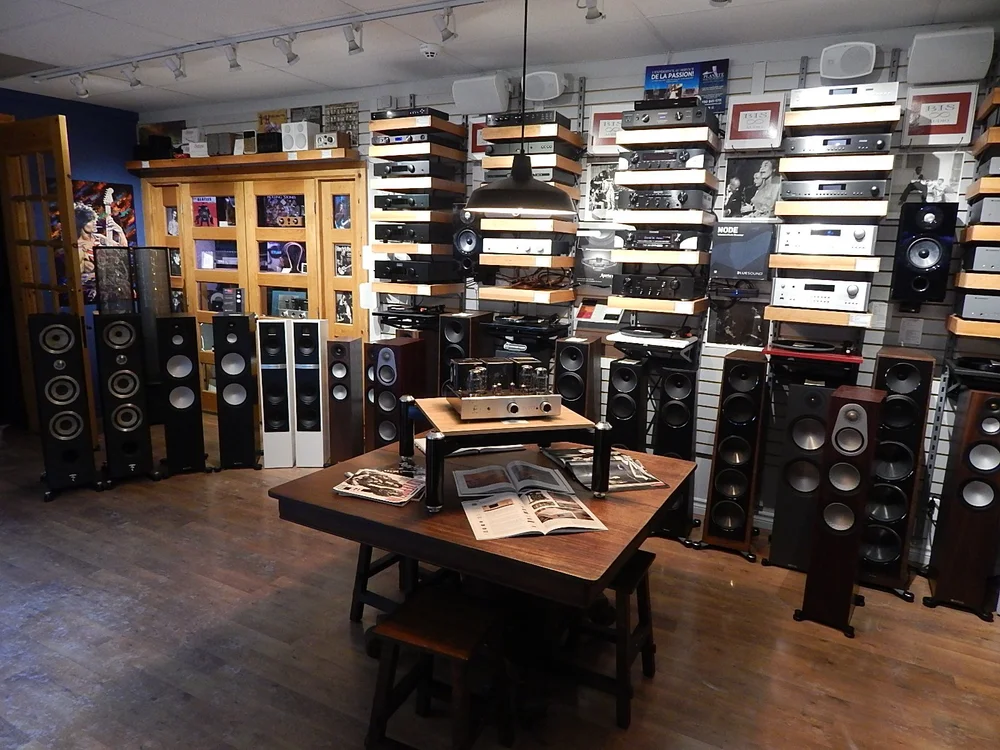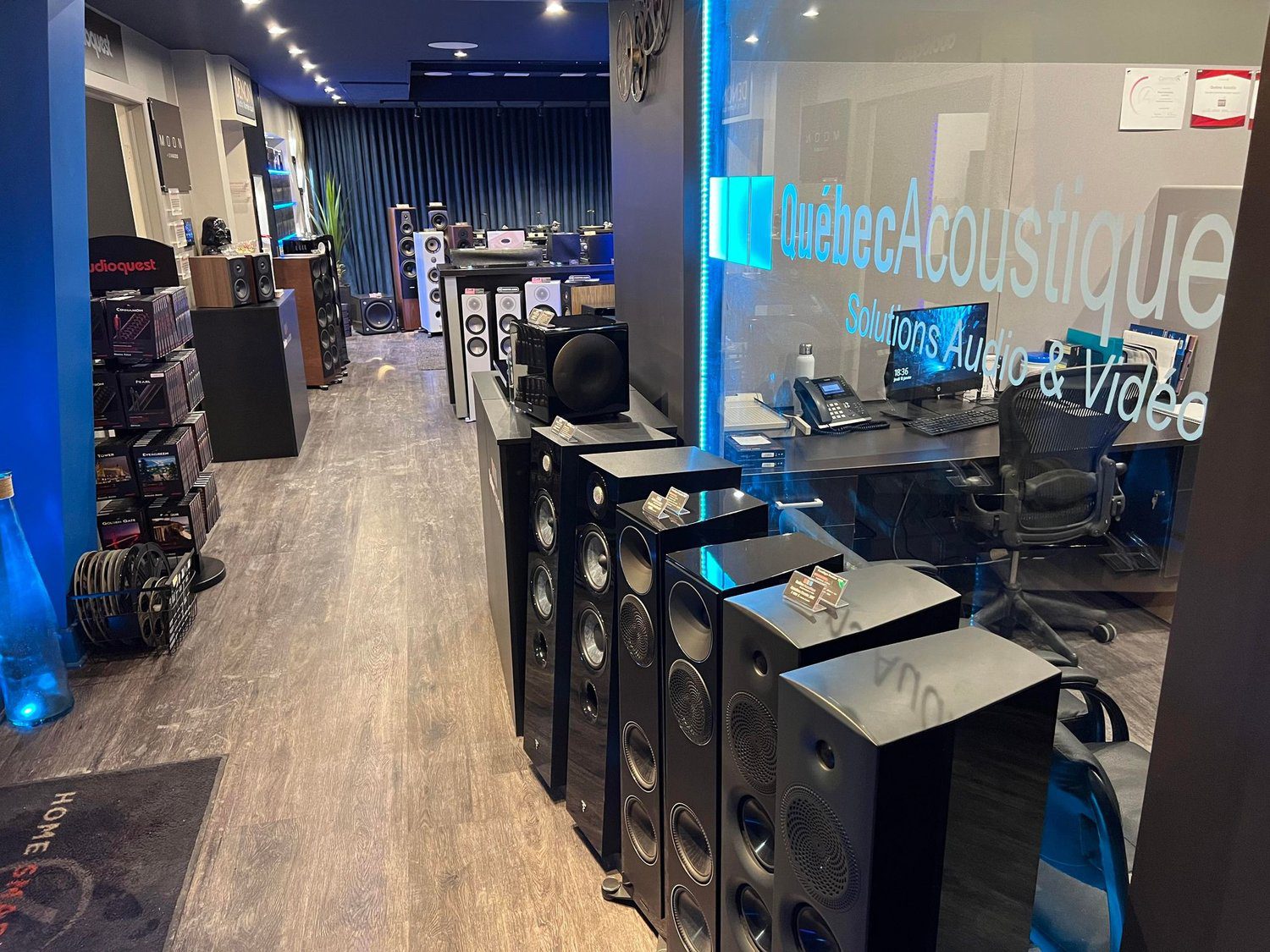
Whether you’re building your first system or upgrading an existing one, knowing the right approach can save you money, time, and frustration—and ultimately increase the emotional response that better sound elicits.
So, in that spirit, here’s my guide to the do’s and don’ts of buying a stereo—your shortcut to the next level of audio goodness.
Best Practices
1. Test Before Buying
If auditioning a component in-store, use your own reference music—tracks you know inside out—and see if the sound lives up to your expectations. Best scenario: the sound exceeds those expectations.
Many times I’ve gone to hear a hi-fi where the salesperson plays their favourite tracks, music usually chosen to flatter the system. That’s fine, but it’s your favourite music that will reveal whether a system is suited to you. If you have favourite music on vinyl, CDs, or other media, bring it with you—or bring a digital playlist.
Play a variety of genres to test the system’s versatility—acoustic instruments, well-recorded vocals, rock, jazz, classical, etc.
2. Check Compatibility
Make sure all your components—speakers, amplifier, source (turntable, streamer, etc.)—work well together (impedance, power ratings, etc.). That means, if at all possible, audition your prospective purchase in your own system.
Years ago, it was common for people to allot the great majority—up to 80%—of their budget to the speakers and spread out the rest. I think it’s wiser to divide your budget roughly evenly between the source, amplification, and speakers. A poor-quality source will always hold your system back—no amplifier or speaker can fix that. Think of it like cooking: if the ingredients are stale or spoiled, the final dish won’t taste good no matter how you prepare it.
And, if buying a system for a shared living space, don’t forget the aesthetics and practicalities. Make sure your non-audiophile partner is on board with the look and size. Failing this, your system can become a source of frustration, no matter how good it sounds.
3. Prioritize Quality Over Price
Invest in reputable brands that offer a warranty and access to local authorized service centers, which can save you headaches later.
If a “cheaper-option” system doesn’t engage you emotionally or make you say “wow,” you likely won’t use it much. Or, you may not use it as much as you like if it breaks and you have to return it overseas, where it could take months to get it back.
I once bought a mountain bike based mostly on price, not fit or comfort. It ended up sitting unused for years. The same can happen with a stereo you got at a really good price: if it doesn’t connect you with the music, the money you saved won’t mean anything.

4. Read Reviews and Specs, or Solicit Friendly Advice
Check expert reviews and technical specifications to see whether the product you’re interested in might be a good fit for your system and sonic preferences.
I always trust my own ears first, but it sometimes helps to bring a friend for a second opinion—they might notice something you missed.
5. Buy from Reputable Sellers
Purchase from authorized dealers to ensure you have a warranty and support.
Some hi-fi shops offer upgrade programs that credit you a partial—or sometimes even the full—amount of your original purchase toward a higher-level model from the same brand.
I’ve also bought gear from Canuck Audio Mart, Audiogon, and even eBay in the UK, but those are strictly “buyer beware” situations. Always check seller ratings and buyer feedback carefully.
For real-time insights, search online for current user experiences and deals.
Worst Practices
1. Buying A Stereo Without Listening
Everyone hears differently and has sound quality preferences. Choosing a stereo system without hearing it first is like letting someone else buy a bicycle for you without a test ride—it might look fine, but if it doesn’t fit you, it’ll soon gather dust in the garage. Likewise, skipping the listening test before buying equipment is among the most common and costly mistakes you can make. No amount of glowing reviews, lab measurements, or friendly recommendations can guarantee that a system will appeal to you. It’s easy to get lost in specifications—wattage, total harmonic distortion, frequency response curves—but numbers can’t convey musicality. A technically excellent system can still leave you unmoved.
Sound quality is subjective. In the end, trust your ears over measurements. Visit stores to demo gear or buy from retailers with good return policies.
2. Not Defining Needs or Budget

It’s very important to clarify what you want from a hi-fi system. Whether your goal is stereo music playback, multi-channel home theatre, or multi-room audio, each will have very different requirements.
Failing to set a realistic budget can lead to overspending or ending up with a system that doesn’t suit your needs. Always define your primary purpose and price range before shopping.
Many people tend to overspend on one component while cutting corners on the rest. A system is only as good as its weakest link. Oversized speakers driven by an underpowered amplifier or fed by a poor-quality source will never reach their potential.
3. Ignoring Room Acoustics
A $10,000 stereo in a poor-sounding room can be outperformed by a $2,000 system in a well-treated one. Don’t overlook how furniture, rugs, curtains, windows, doors, and speaker placement shape the sound. Even the room’s geometry matters: irregular or L-shaped spaces often require more careful setup to achieve balanced, natural sound.
Proper room acoustics is at least half the battle for great audio. The size, shape, and furnishings of your listening area dramatically influence clarity, imaging, and bass response. Large, overpowering speakers in a small room—or small, underpowered ones in a big space—can lead to disappointing results.
An experienced sales representative can help you select components that work synergistically with your environment. The right pairing between system and space will allow your system to shine.
4. Choosing Style Over Substance
Don’t buy a system just because it looks cool, matches your décor, or is on sale. Beautiful gear that doesn’t sound good will quickly become an eyesore.
Another common mistake is focusing on brand name over sound quality. Chasing big-name brands without evaluating sound quality or features can lead to overpaying for mediocre performance. Lesser-known brands often offer better value.
5. Falling for Hype and Sales Gimmicks
Avoid being swayed by buzzwords like “audiophile-grade,” “hi-res certified,” or “exclusive edition” without listening for yourself. Marketing claims can be exaggerated, so trust your ears more than what’s written on the packaging or brochure, or what’s said by the salesperson.

Be equally cautious with flashy promotions or bundled “deals.” These often involve lower-quality components designed to move inventory, not deliver great sound. Avoid impulse purchases during sales events and take the time to research each part of the system.
As an audiophile, I often cringe when I see someone at a big-box store buying a stereo or home-theater system “all in one box.” While convenient, these systems rarely deliver satisfying sound quality. In many cases, spending the same amount—or just a little more—on carefully chosen components will result in much better sound and a far more engaging listening experience.
6. Skipping Professional Advice
Don’t hesitate to ask for help. Salespeople, reviewers, or knowledgeable friends can provide insights and help you avoid mismatching gear. Ignoring expert advice can lead to costly trial and error, and a system that you rarely listen to.
Also, make sure your components work well together. Incompatible receivers, speakers, or streaming devices can cause frustrating performance or technical issues. Check that inputs, outputs, and supported formats—such as Bluetooth, Wi-Fi, or Dolby Atmos—match your existing setup and needs. When in doubt, consult a professional.
7. Rushing the Purchase Or Buying Used
Don’t make a buying decision after a five-minute demo. Take your time, compare different systems, and return for a second or even third listen if needed. Your ears and wallet will thank you.
Be careful when buying used stereo components. Purchasing through Canuck Audio Mart, Audiogon, Craigslist, eBay, or Facebook Marketplace carries risks: you could lose your money and receive no product, or you might end up with something defective.
While buying used gear can save you money, failing to check for wear, damage, or outdated technology can lead to costly repairs or to features that no longer work. Test items in person whenever possible. If that isn’t an option, buy only from sites that display seller feedback, and deal exclusively with sellers who not only have strong ratings but have also been active on the site for some time.
*
At the end of the day, your stereo should serve one purpose: to move you with the music you love. Trust your ears, take your time, and remember—great sound isn’t just about how much you spend, but about choosing carefully and setting things up right.
















Leave a Reply